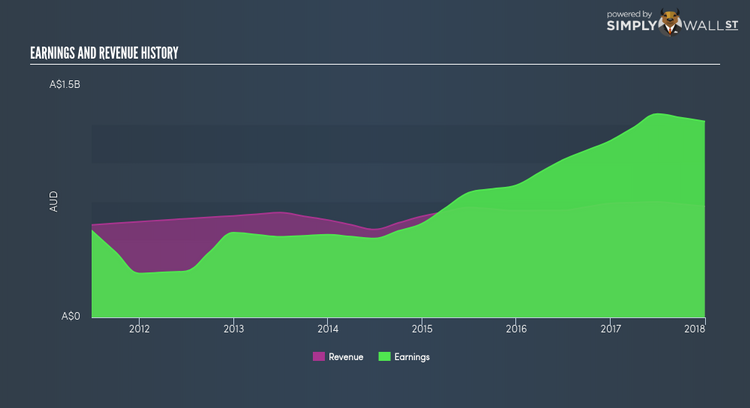How Does GPT Group (ASX:GPT) Affect Your Portfolio Returns?

If you are a shareholder in GPT Group’s (ASX:GPT), or are thinking about investing in the company, knowing how it contributes to the risk and reward profile of your portfolio is important. The beta measures GPT’s exposure to the wider market risk, which reflects changes in economic and political factors. Not every stock is exposed to the same level of market risk, and the broad market index represents a beta value of one. Any stock with a beta of greater than one is considered more volatile than the market, and those with a beta less than one is generally less volatile.
Check out our latest analysis for GPT Group
What is GPT’s market risk?
GPT Group’s beta of 0.14 indicates that the stock value will be less variable compared to the whole stock market. The stock will exhibit muted movements in both the downside and upside, in response to changing economic conditions, whereas the general market may move by a lot more. GPT’s beta implies it may be a stock that investors with high-beta portfolios might find relevant if they wanted to reduce their exposure to market risk, especially during times of downturns.
How does GPT’s size and industry impact its risk?
GPT has a market capitalization of AU$8.97B, putting it in the category of established companies, which are found to experience less relative risk compared to small-sized companies. But, GPT’s industry, reits, is considered to be cyclical, which means it is more volatile than the market over the economic cycle. Therefore, investors can expect a low beta associated with the size of GPT, but a higher beta given the nature of the industry it operates in. It seems as though there is an inconsistency in risks from GPT’s size and industry. There may be a more fundamental driver which can explain this inconsistency, which we will examine below.
Is GPT’s cost structure indicative of a high beta?
An asset-heavy company tends to have a higher beta because the risk associated with running fixed assets during a downturn is highly expensive. I test GPT’s ratio of fixed assets to total assets in order to determine how high the risk is associated with this type of constraint. With a fixed-assets-to-total-assets ratio of greater than 30%, GPT appears to be a company that invests a large amount of capital in assets that are hard to scale down on short-notice. Thus, we can expect GPT to be more volatile in the face of market movements, relative to its peers of similar size but with a lower proportion of fixed assets on their books. This outcome contradicts GPT’s current beta value which indicates a below-average volatility.
What this means for you:
You could benefit from lower risk during times of economic decline by holding onto GPT. Take into account your portfolio sensitivity to the market before you invest in the stock, as well as where we are in the current economic cycle. Depending on the composition of your portfolio, GPT may be a valuable stock to hold onto in order to cushion the impact of a downturn. What I have not mentioned in my article here are important company-specific fundamentals such as GPT Group’s financial health and performance track record. I highly recommend you to complete your research by taking a look at the following:
Future Outlook: What are well-informed industry analysts predicting for GPT’s future growth? Take a look at our free research report of analyst consensus for GPT’s outlook.
Past Track Record: Has GPT been consistently performing well irrespective of the ups and downs in the market? Go into more detail in the past performance analysis and take a look at the free visual representations of GPT’s historicals for more clarity.
Other High-Performing Stocks: Are there other stocks that provide better prospects with proven track records? Explore our free list of these great stocks here.
To help readers see pass the short term volatility of the financial market, we aim to bring you a long-term focused research analysis purely driven by fundamental data. Note that our analysis does not factor in the latest price sensitive company announcements.
The author is an independent contributor and at the time of publication had no position in the stocks mentioned.

 Yahoo Finance
Yahoo Finance 
